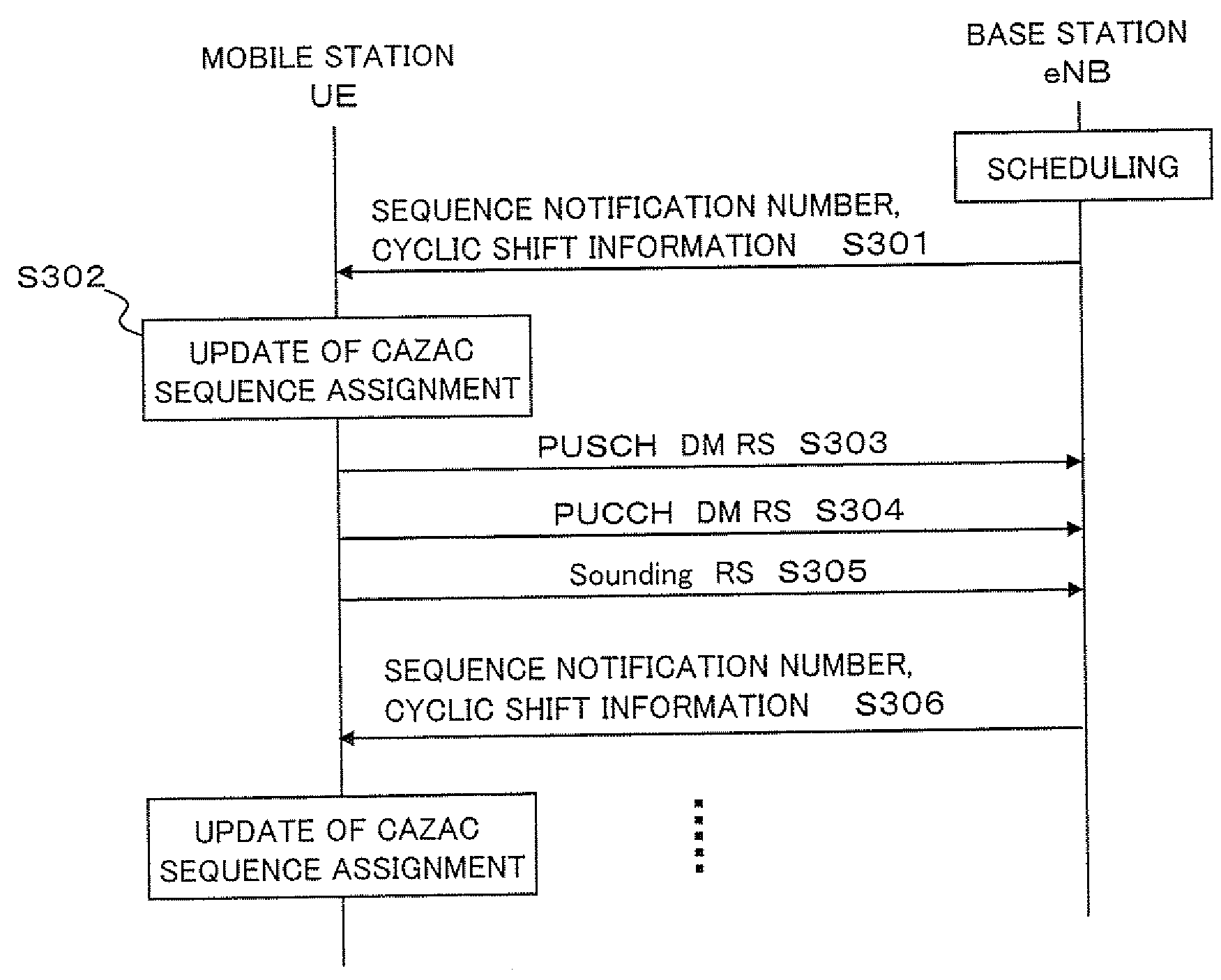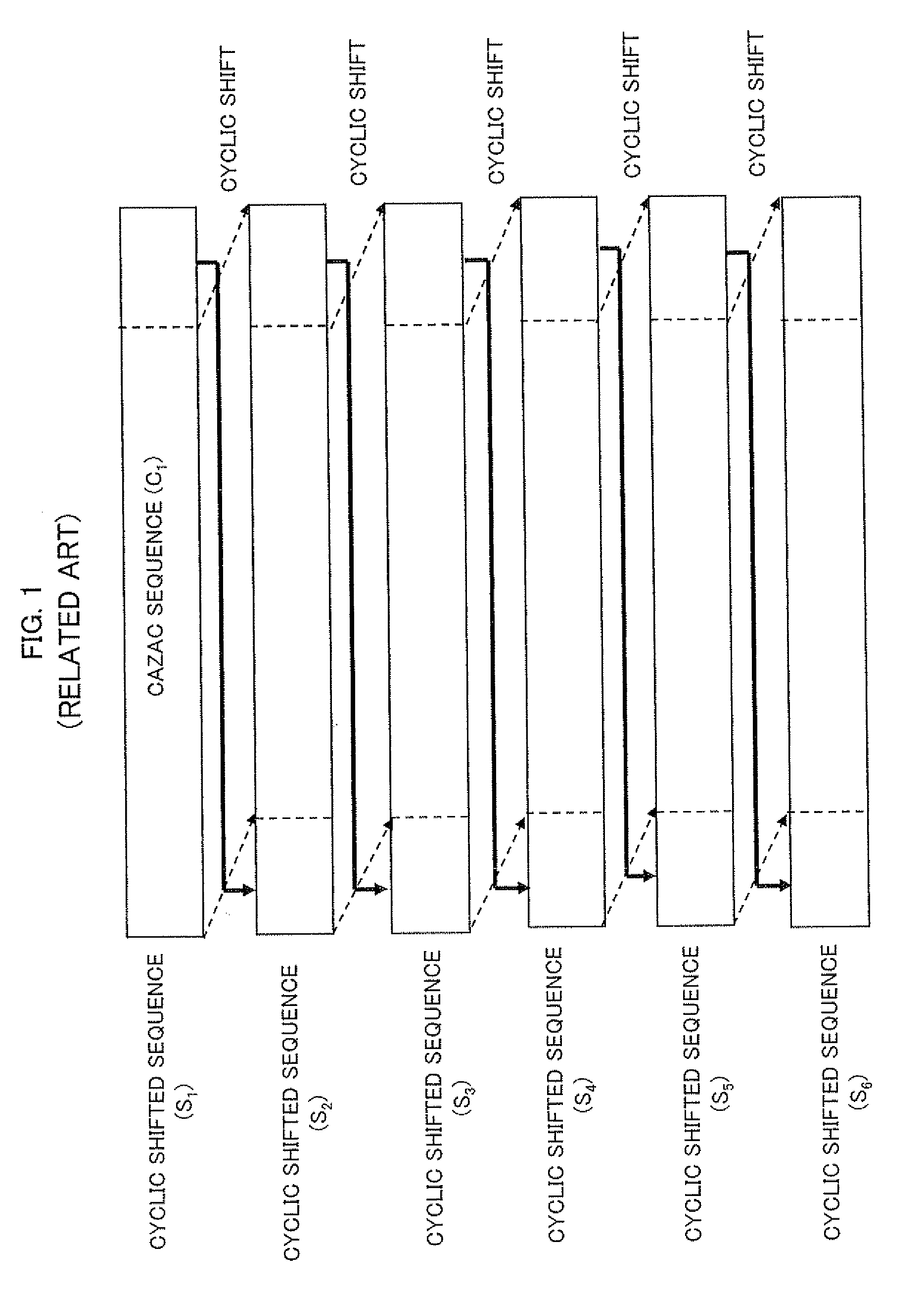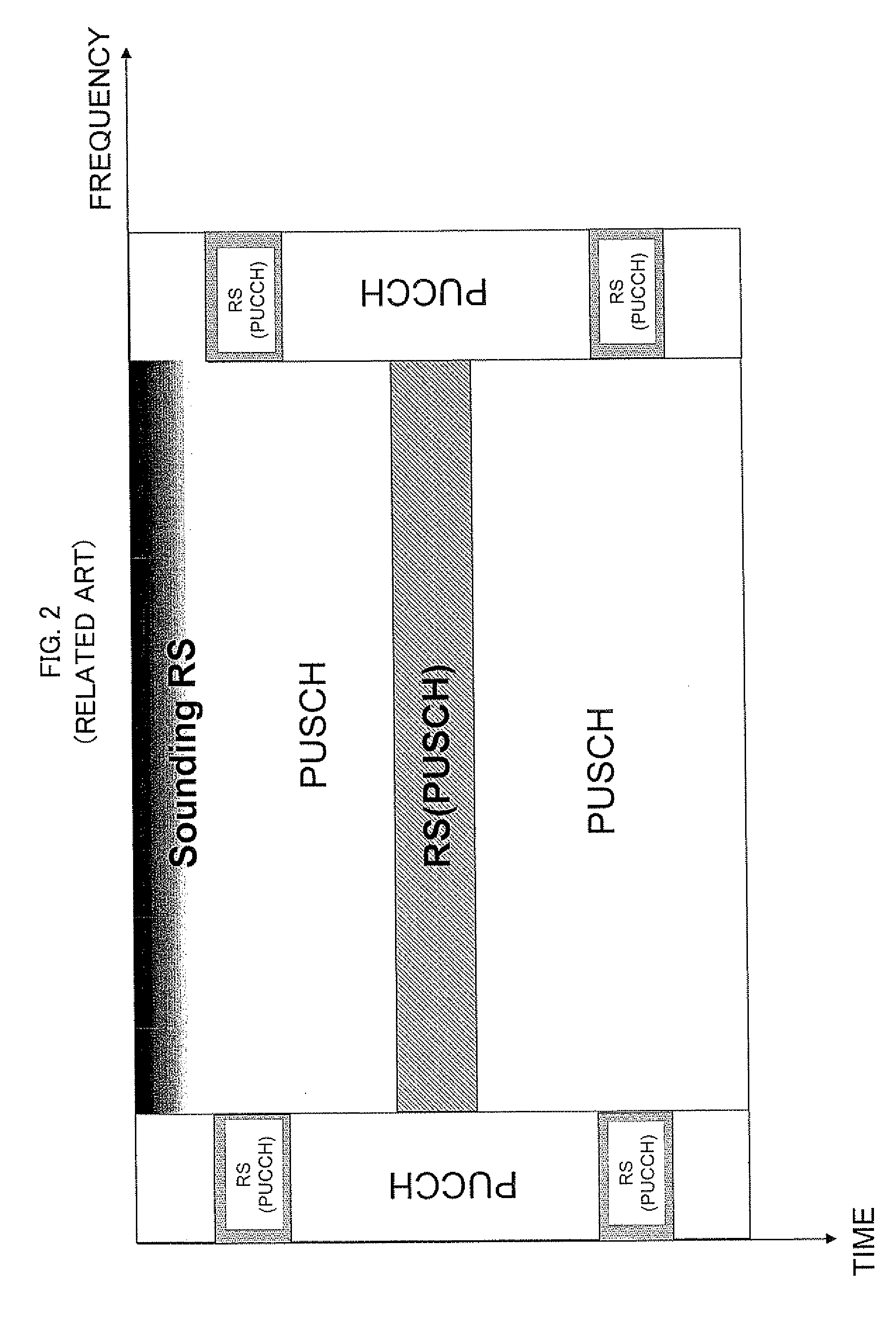Method and device for assigning reference signal sequences in mobile communications system
a reference signal and mobile communication technology, applied in the field of mobile communication systems, can solve the problems of small reuse distance in the case of sounding reference signal sequences, short reuse distance, etc., and achieve the effect of increasing the number of users and reducing the influence of inter-cell interferen
- Summary
- Abstract
- Description
- Claims
- Application Information
AI Technical Summary
Benefits of technology
Problems solved by technology
Method used
Image
Examples
first exemplary embodiment
1. First Exemplary Embodiment
[0066]FIG. 5A is a cell structure diagram showing an example of cell repetition assignment of reference signal sequence groups according to a first exemplary embodiment of the present invention. FIG. 5B is a cell structure diagram showing an example of sector repetition assignment of reference signal sequence groups according to the present exemplary embodiment. Here, nine cells #1 to #9 are shown as an example, and each cell #i is assumed to include three sectors #i.1 to #i.3. FIGS. 5A and 5B show the same cells #1 to #9.
[0067]In FIGS. 5A and 5B, G1 to G9 denote groups, which will be described later, and S1 to S6 denote six cyclic shifted sequences based on any reference signal sequence. Moreover, an expression “Sx,y” denotes two cyclic shifted sequences Sx and Sy, such as “S1,4” denoting two cyclic shifted sequences S1 and S4, and an expression “S1-6” denotes six cyclic shifted sequences S1 to S6. The same will hold true hereinafter.
[0068]Note that cyc...
second exemplary embodiment
2. Second Exemplary Embodiment
[0127]According to the above-described first exemplary embodiment, cell repetition assignment is employed for group assignment with respect to the PUSCH / PUCCH demodulation reference signal, and sector repetition assignment is employed for group assignment with respect to the sounding reference signal. However, the present invention is not limited to this embodiment.
[0128]According to a second exemplary embodiment of the present invention, in a case where the sounding reference signal has a sequence length of 36, cell repetition assignment is also employed for group assignment with respect to the sounding reference signal, and three reference signal sequences included in each group are assigned to three sectors respectively. With respect to the PUSCH / PUCCH demodulation reference signal, sequence assignment is performed as in the first exemplary embodiment, and therefore description thereof will be omitted. Hereinafter, description will be given only of s...
third exemplary embodiment
3. Third Exemplary Embodiment
[0135]According to the above-described first and second exemplary embodiments, the assignment method placing higher priority on the reuse distance is employed with respect to the PUCCH demodulation reference signal. However, the present invention is not limited to these embodiments.
[0136]According to a third exemplary embodiment of the present invention, an assignment method placing higher priority on the number of multiplexed UEs is employed with respect to the PUCCH demodulation reference signal. That is, in the third exemplary embodiment, cell repetition assignment is employed with respect to the PUSCH demodulation reference signal as in the first and second exemplary embodiments, but sector repetition assignment is employed with respect to the PUCCH demodulation reference signal and sounding reference signal.
[0137]FIG. 12A is a cell structure diagram showing an example of a method for cell repetition assignment of sequence groups with respect to the ...
PUM
 Login to View More
Login to View More Abstract
Description
Claims
Application Information
 Login to View More
Login to View More - R&D
- Intellectual Property
- Life Sciences
- Materials
- Tech Scout
- Unparalleled Data Quality
- Higher Quality Content
- 60% Fewer Hallucinations
Browse by: Latest US Patents, China's latest patents, Technical Efficacy Thesaurus, Application Domain, Technology Topic, Popular Technical Reports.
© 2025 PatSnap. All rights reserved.Legal|Privacy policy|Modern Slavery Act Transparency Statement|Sitemap|About US| Contact US: help@patsnap.com



